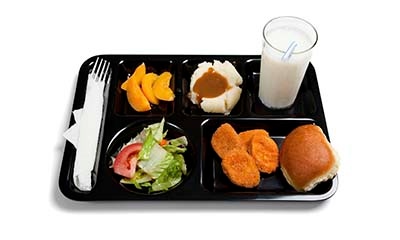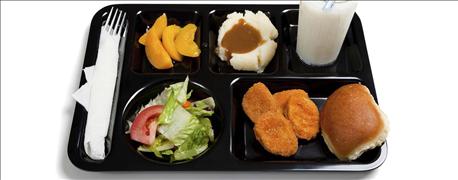July 21, 2016

The Obama Administration announced four final rules that implement provisions of the Healthy, Hunger-Free Kids Act. As a key component of First Lady Michelle Obama's Let's Move! initiative to raise a healthier generation, the rules will ensure that children have access to healthy snacks and that nutrition standards for the foods marketed and served in schools are consistent.

USDA's Food and Nutrition Service administers 15 nutrition assistance programs including the National School Lunch Program and the School Breakfast Program. (Photo: michael flippo/Thinkstock)
"I am thrilled with the progress we continue to make in building healthier learning environments for our kids with science-based nutrition standards for all food sold and marketed in schools. As a mom, I know how hard parents work to provide nutritious meals and snacks to their kids, and we want to make sure we support those efforts with healthy choices at school," said First Lady Michelle Obama. "I am inspired by the tremendous work that's being done in schools across the country to provide our kids healthy food to fuel them throughout the day so that they can grow up healthy and fulfill their boundless promise."
"Children's ability to learn in the classroom and reach their fullest potential depends on what we do right now to ensure their health," stated Agriculture Secretary Tom Vilsack. "The actions we are announcing today continue the Administration's unprecedented commitment to building a healthier next generation and institutionalize the positive changes schools across the country have already made."
Four rules
1. The Smart Snacks in School final rule aligns the nutritional quality of snacks sold to children during the school day with the science-based improvements made to school lunches and breakfasts over the last five years. These include using practical, science-based nutrition standards that ensure children are offered more fruits, vegetables and whole grains. States have the flexibility to allow limited exemptions to school-sponsored fundraisers during the school day. The Smart Snacks standards were implemented in the 2014 – 2015 school year in accordance with the interim final rule. This final rule makes modest improvements to those standards.
2. The Local School Wellness Policy final rule ensures that any food or beverage that is marketed on school campuses during the school day meets the Smart Snacks standards. According to a study by the Robert Wood Johnson Foundation, 70% of elementary and middle school students are exposed to some kind of food/beverage marketing through school. The Local School Wellness Policy final rule requires schools to engage parents, students and community members in the annual development and assessment of local school wellness policies. These policies guide a school district's efforts to establish school environments that support healthy eating and physical activity. States and local communities will have flexibility in developing a policy that works best for them.
3. The Community Eligibility Provision final rule allows schools and local educational agencies with high poverty rates to provide free breakfast and lunch to all students to promote access to healthy food and reduce administrative burdens on schools and families. The final rule streamlines administrative processes, making it easier to participate in the meal programs. More than 18,000 schools in high poverty areas participate in CEP, which is in its second year of nationwide implementation offering nutritious meals at no cost to 8.5 million students.
4. The Administrative Review final rule updates the administrative review process used by state agencies to monitor federally-funded school meal programs. It safeguards the integrity of the programs, ensures taxpayer dollars are being spent as intended, and increases accountability and transparency by publicly posting how well school food authorities are complying with various requirements. State agencies began implementing the updated review process in school year 2013-2014, and currently 95% of state agencies are already implementing the updated administrative review process.
USDA's Food and Nutrition Service administers 15 nutrition assistance programs. In addition to National School Lunch Program and the School Breakfast Program, these programs include the Supplemental Nutrition Assistance Program, the summer meals programs, and the Special Supplemental Nutrition Program for Women, Infants, and Children, which together comprise America's nutrition safety net.
Source: USDA
You May Also Like




